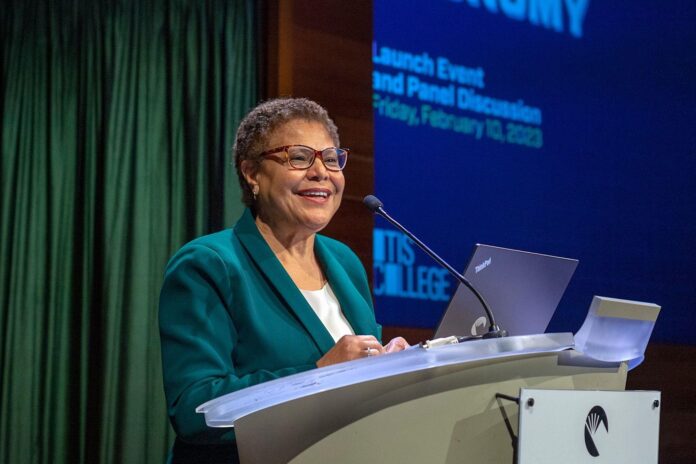The creative industry of California had a healthy economic recovery in 2021, outperforming that of the state’s overall economy, according to a report by Los Angeles’ Otis College of Art and Design released last month. Comprising five sectors identified by the report’s authors—entertainment, fine and performing arts, fashion, architecture and related services and creative goods and products—the creative economy contributed 14.9% of the state’s $3.4tn economy, or $507.4bn, in 2021. It also showed a fairly good employment rebound, and made up 7.6% of the state’s jobs, or 1.8 million, that year.
Released annually, the Otis College Report on the Creative Community has been an important resource for the creative community and policymakers since its first publication in 2007. This year’s report, prepared by the economics research and planning firm CVL Economics, looks for the first time at the roles of tech and gaming as well as the growing gig economy. It also considers the ramifications of the ongoing Covid-19 pandemic, which disproportionately impacted the arts, and from which the creative sectors are recovering unevenly.
“We’ve found ourselves in an environment where the way creative goods and services are consumed, developed, distributed and monetised is evolving at an unprecedented rate,” the report’s authors write. “Crafting a robust set of policies to respond to and to shape this shifting landscape will not only foster a stronger economy, but also allow California’s residents and communities to capitalise on the resulting opportunities and benefits.”
The direct impact of the creative economy on California in 2021 surpassed the entire economies of Miami, Philadelphia and Seattle, according to Adam Fowler, a founding partner at CVL Economics. This was almost entirely driven by the entertainment sector—the most tech-driven sector, including digital media, print publishing and motion picture and video—which contributed $413.6bn, or about 81%, of the gross regional product, and employed more than 1.1 million workers. The architecture sector followed with $43.2bn, then fine and performing arts, with $34.9bn.
The last in particular was the hardest hit by the pandemic and is struggling to regain footing, the report says. It is the only examined sector to not experience job expansion between 2020 and 2021. Employment levels saw steep declines in 2020, with the loss of 17% of sector jobs in California and 12% in Los Angeles County. In 2021, employment remains “well below” pre-pandemic levels, with all sub-sectors challenged by staffing shortages. Of the nearly 315,000 jobs across the state in 2021, over half of which are located in Los Angeles County, 59.8% are independent artists, writers and performers, with the rest representing workers in museum, education and performing arts fields. More than 51% were engaged in gig work, representing the largest share of all five creative sectors.
Workers in the fine and performing arts sector also earned the lowest wages on average, earning about $45,000 annually in 2021. And wages grew at the slowest rate, at 5.1%. In comparison, workers in the entertainment sector earned average wages of $199,277 and had the highest wage growth, 36.4%, between 2018 and 2021.
“One of the main takeaways is we’ve really got to cross-pollinate more,” Fowler said during the launch event for the report. “We need to think about how folks in tech, folks in adjacent industry sectors can lean in and maybe help these small performing and fine arts folks think about digital goods and products.”
The report also includes recommendations for policymakers to support the economic landscape. Its authors advocate for the creation of tax incentives to support global competitiveness, more accessible apprenticeship opportunities and improved data collection on jobs and skills. They also propose the establishment of a digital research and development for the arts to encourage experimentation with emerging technologies.
“These jobs matter and they impact and are impacting adjacent industries,” Fowler said. “If you’re from an arts foundation, talk to someone in tech. That’s going to be really important as we move forward and keep the California story strong.”

























